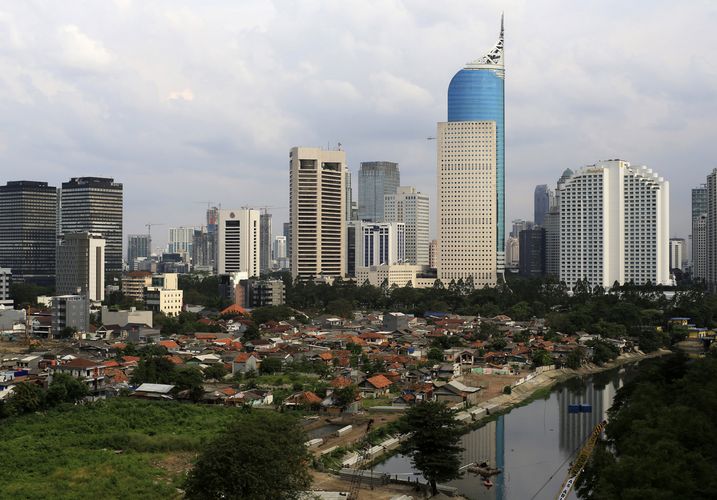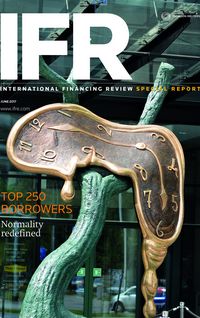Across-the-board investment-grade ratings open up new investor universe for Indonesia.
Indonesia’s fortunes from a credit perspective have brightened recently, with spreads on its offshore curve tightening considerably amid a wave of demand from investors in the Reg S/144A market and, perhaps most tellingly, in the Samurai market. A positive ratings trajectory helps explain the story of the credit’s resurgence.
Around mid-May, Standard & Poor’s pushed Indonesia’s long-term sovereign rating up to BBB-, together with retaining the country’s stable outlook. Following the upgrade, Indonesia enjoys an investment-grade credit rating from all three big Western agencies for the first time since the Asian financial crisis of the late 1990s.
A background tailwind was provided by the one-notch push up to a positive outlook for Indonesia from Fitch in December and Moody’s in February.
The upgrade was not treated by markets as a mere detail: Indonesian domestic government bonds rallied more than 20bp at the long end and the Jakarta stock index surged following the move. A universe of institutional investors in Asia, mainly in Japan and South Korea, opens up following S&P’s action - namely, those funds able only to book paper rated investment-grade across the three big agencies, helping explain the surge in Indonesian debt and equities.
The rationale for the ratings move cited by the agencies has been the relative macroeconomic stability enjoyed by Indonesia over the past few years, thanks in part to economic reforms initiated by President Widodo. These include a tax amnesty programme which has taken the fiscal strain off the government’s coffers, and a public works spending programme intended to boost Indonesia’s strained infrastructure.
Indonesia’s primary market outlook in the offshore markets looked less than assured at the end of 2016, despite the building positive credit sentiment. Rising US Treasury yields on the back of the so-called “Trump reflation trade”, with the incoming president’s spending and tax cut plans viewed as inflationary and therefore negative for US government bond prices, saw yields on Asian credit rise while spreads widened. Indonesia’s five-year offshore dollar curve widened almost 20bp last December.
Pre-funding brings opportunities
Nevertheless, this was arguably immaterial, given that Indonesia had pre-funded its 2017 budget by the end of last year, via a US$3.5bn five-year, 10 and 30-year Global that earned plaudits for its execution. The deal brought in around US$12bn of orders and priced well within guidance on each tranche - by an average 30bp. Anything added to that funding total this year sits firmly in the opportunistic funding space and is essentially something of a reputation-burnishing exercise for the sovereign.
“Over the past few years the Republic of Indonesia has developed a strong following among institutional investors due to its disciplined approach to new issues. They have structured issues well, communicated well and timed the market. As a result, they have successfully built out their yield curve across multiple tranches and G3 currencies, supported by a diversified investor base. S&P’s much anticipated upgrade was icing on the cake,” said Jake Gearhart, head of debt syndication and origination, Asia-Pacific, at Deutsche Bank in Singapore.
Indonesia has indeed enjoyed the opportunistic funding window and enhanced its issuer reputation in the process, via sukuk and Samurai trades which ticked the pricing and commission superlative boxes.
The sukuk might have been regarded as an exquisite piece of grandstanding in light of the comfortable funding position enjoyed by the republic. And bragging rights were earned from the trade’s superlatives: the US$3bn five and 10-year priced at the lowest profit rate yet achieved by a sukuk trade from Indonesia, inside initial guidance by 35bp on each tranche and inside the coupon prints achieved by December’s conventional dollar trade.
Samurai success
Meanwhile, as if that were not enough, Indonesia turned its attention in early June to the Samurai market, where it priced its first public Samurai in over 30 years.
The ¥100bn (US$896m) deal came with three, five and seven-year tranches and priced tight to yen swaps, at the low end of the indicated marketing range.
All told, it was a measure of both the Samurai market’s willingness to take a slightly more adventurous line from the credit point of view, together with the coming of age of Indonesia as a credit in the Japanese market. Previous forays in Samurais in 2009, 2010 and 2012 had come with a Japan Bank for International Credit guarantee, while the republic had visited in 2015 and 2016 on a standalone basis, but in private placement format and at a short tenor.
Indonesia left JBIC’s “apron strings” even further behind this time: the bank did not participate as an investor, as it had on the sovereign’s last two Samurai offerings.
The trade stands as testament to the power of the S&P ratings upgrade, with the sovereign having won investment-grade status from all three major agencies helping power the Samurai over the line. Moreover, Indonesia was able to print at significantly tighter spreads versus its 2016 trade, pulling in by between 40bp and 50bp.
Admittedly, there was some help from the turnaround in yen swap rates from the negative, but a contraction of Indonesia’s offshore credit curve on the back of the upgrade also played a significant part in recalibrating the sovereign’s yen pricing. As if that were not enough, Indonesia paid just 10 sen in commission on the Samurai, well inside the 25 sen it had paid on its most recent offerings in the format.
“It all looks rather as good as it gets for Indonesia in terms of its offshore funding programme. And there’s a natural tailwind provided by interest in the domestic government bond market, where real yields close to 7% are pulling in offshore investors. Right now, it must be the envy of other sovereign issuers in the region,” said a Hong Kong syndicate head.
To see the digital version of this special report, please click here
To purchase printed copies or a PDF of this report, please email gloria.balbastro@tr.com




